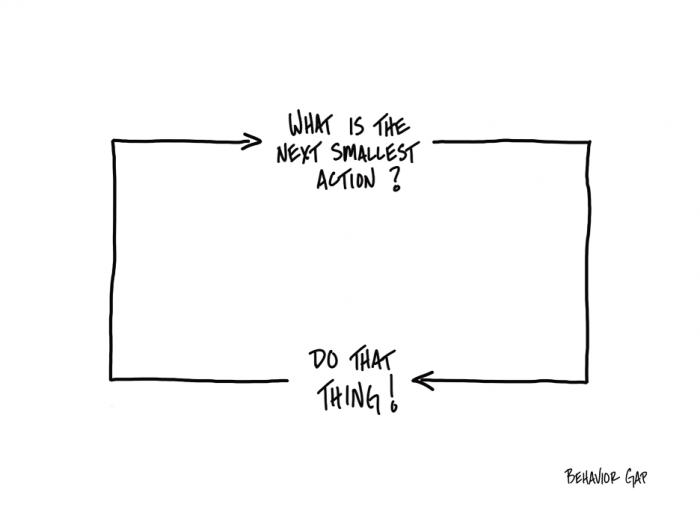The Three Pillars of Prosperity: Where Top Financial Professionals Focus Their Time


Amar Pandit
A respected entrepreneur with 25+ years of Experience, Amar Pandit is the Founder of several companies that are making a Happy difference in the lives of people. He is currently the Founder of Happyness Factory, a world-class online investment & goal-based financial planning platform through which he aims to help every Indian family save and invest wisely. He is very passionate about spreading financial literacy and is the author of 4 bestselling books (+ 2 more to release in 2020), 8 Sketch Books, Board Game and 700 + columns.
February 27, 2024 | 6 Minute Read
I received an email from a dear reader Sagar (name changed) in response to last Tuesday’s post “The Founder’s Dilemma: Navigating Time Traps”. He wrote (slightly edited his email), “I read your post again and again. I can’t tell you how many of these time traps I am guilty of. I keep wasting my time. The best part is while I am wasting my time, I feel productive. I feel like I am doing something valuable even though I know I am just busy. I simply don’t tell myself that. This is the first time I have opened up to someone. I have the time to attend 1–3-day events but I don’t have the time to do what really needs to be done to grow my firm. I know chasing one more designation will not change my business, yet I am tempted to do so all the time. Can you kindly write about the things that I should be doing? ”
First, a big pat on Sagar’s back for understanding and acknowledging that there is a problem. How many of us admit that there is a problem that we need to solve? Second, the great thing is that he had already taken the next step to change his situation. Confused about what I mean by this?
The very act of writing to me is a small but important step that Sagar took. This led him to the next step (an email from me that he could act on). And I believe this led to him taking the next step. I can’t guarantee that if you follow the next smallest step formula, you will succeed. But I can guarantee that if you don’t take any steps at all, nothing much will come of your thoughts.

I know I digressed a bit from Sagar’s question but let me get there quickly without adding any more words.
There are three types of activities that financial professionals need to be doing most of the time.
1. Revenue Producing Activities: Revenue is the lifeblood of any financial firm (or for that matter any firm), and activities that directly contribute to revenue generation should be a top priority.
These include meeting up with prospects and clients, conducting amazing first meetings, proactive client acquisition strategies converting prospects into clients, and marketing (which includes defining a niche, crafting compelling value propositions, and communicating the narratives effectively). For solo firms, this also includes developing and executing investment strategies, and delivering personalised plans that meet clients’ specific financial goals. It’s crucial for you to not only engage in these activities but to also hone your skills continuously in these areas to ensure you can provide a world class client experience.
Some specific examples:
Prospecting: This is about seeking out new potential clients who fit your ideal client profile. A significant portion of your time needs to go here. This involves understanding the prospects’ needs, providing them with valuable information, and demonstrating how your services can help them achieve their financial goals.
New Client Onboarding: Engaging new clients through discovery meetings, goal setting, and strategy sessions.
Client Rediscovery or Review Meetings: Regularly scheduled meetings with clients to review their progress, which can lead to the identification of new needs and services. Rediscovery meetings can help discover some new goals or change existing ones.
Productivity-Enhanced Sales Calls: Utilising data analytics to identify high-potential leads and efficiently targeting outreach efforts.
Client Referral Programs: Developing this program can help firms bring in high value ideal clients. Often this is done in a rudimentary way and most firms blow up this important revenue generating activity.
External Referral Programs: Developing partnerships or referral programs with accountants, lawyers, or other professionals that can bring in new clients.
Specialised Services: Offering specialised services for unique client needs such as philanthropy, multi-generational needs, or financial education for family members.
2. Leverage Producing Activities: Leverage in our industry/profession context refers to any activity that multiplies the effectiveness of effort without necessarily requiring a proportional increase in resources. This includes systematising processes from client onboarding to regular reporting, that enable you to handle more clients efficiently. It also involves the adoption of a modern technology platform that enables you to deliver an outstanding client experience while at the same time helps you run your entire business on it. Collaborating with the right firm will increase your capacity and scale instantaneously and free up your time to focus on revenue producing activities and the third type of activity (which is super important too).
Delegation is another important way to build leverage: training and empowering team members to take on more responsibilities so that you can concentrate on areas that require their unique expertise. While we are not taught how to delegate, this is an important skill for all of us to learn.
Some specific examples:
Process Automation: Implementing software solutions for tasks like portfolio rebalancing, trade execution, and compliance monitoring.
Recruiting: We are in a personal/relationship and financial care business…We need people to grow…to serve more people…to take care of clients… Therefore, always be recruiting.
Team Training: Developing a team’s skills to handle more complex tasks, which in turn allows for a broader service offering.
Developing Leaders is a forward-thinking strategy that ensures the longevity and resilience of your business. There are phenomenal benefits of investing in leadership development some of which are as follows – A firm that provides leadership development shows a commitment to its team’s career growth, which attracts top talent and increases retention. Additionally training future leaders prepares the firm for succession and transitions, safeguarding its continuity. This is crucial for maintaining client trust and service consistency, especially when senior folks retire or move on. There are many others which I hope to cover in a future post on Leadership.
Outsourcing Non-Core Functions: Engaging third-party providers for administrative tasks like scheduling, data entry, or basic customer service inquiries.
Creating Scalable Systems: Establishing standardised protocols for client reviews, report generation, and communication, so they can be handled by support staff without the advisor’s direct involvement.
For me, creation of content is a leverage producing activity…This blog is now read by 15000+ professionals like you, bankers, and asset managers.
3. Relationship Building Activities: Building and maintaining strong relationships with clients is what turns your service into a trusted partnership. Relationship-building activities are those that foster trust and loyalty, such as regular check-ins with clients, personalised communication, and thoughtful gestures that show clients they are more than just a number. These activities also include educational efforts, such as seminars and webinars that help clients understand their financial landscape, and community-building events that bring clients together. Moreover, by actively listening and responding to clients’ needs and feedback, you can deepen these relationships, creating a foundation for referrals and long-term retention.
Some Relationship Building Activities:
Personalised Communication: Sending clients custom-tailored updates on their investments or personalised notes on special occasions.
Client Appreciation Events: Hosting seminars, appreciation dinners, or family financial workshops.
Active Listening and Follow-ups: Conducting regular check-ins with clients to discuss their changing needs and showing responsiveness by implementing their feedback.
Community Engagement: Participating in local events, sponsoring community activities, and sharing valuable financial insights through social media and newsletters to build a stronger community presence.
In combining these three types of activities, you can create a well-rounded and sustainable business. Revenue-producing activities ensure the business remains profitable, leverage-producing activities build capacity and efficiency, and relationship-building activities foster a loyal client base. By focusing on these areas, you can not only achieve business success but also make a meaningful impact in your clients’ lives.
Before you embark on your next task, take a moment for a strategic pause.
Reflect: Does this task drive revenue, create leverage, or strengthen relationships? Your time, focus, and resources are invaluable—invest them wisely in these key areas.
This philosophy is a cornerstone of my business, and it’s reshaping Sagar’s approach as well. How might it transform your priorities and your firm’s trajectory? Let’s commit to actions that not only feel productive but truly align with our deepest professional aspirations.
Similar Post
Growth
Are you solving your Real Problem?
One of the critical areas that all IFA firms have been hit is Revenue. Most firms have seen a drop of 30-50% in revenue. I will not get into the reasons as you know why this has ha ....Read More
26 May, 2020 | 5 Minute Read
Growth
Beyond the AUM Boom: Preparing for the Tides of Change
I ended last week’s post ‘2024- The Year of Strategic Rethinking’ with the question, “What are you going to change your mind about in 2024?” I am sure you would have thou ....Read More
9 January, 2024 | 5 Minute Read
Growth
About historical patterns and predictions of the future
Amar wrote a wonderful blog post last week, discussing the utility (or more correctly, the futility) of using patterns in historical financial data as the basis for taking financia ....Read More
15 February, 2022 | 5 Minute Read
Growth
What’s your Dunbar Number?
Have you heard of the Dunbar's Number? If you have, give yourself a pat on your back but have you figured out your ideal Dunbar number yet? If not, as the media screams, “you hav ....Read More
8 March, 2022 | 5 Minute Read
Growth
This powerful framework can bring out the Champion hidden within you
One of the most important words for me is “Think” or “Thinking”. This is where the seeds of pretty much everything are sown in our career as well as life. I personally inve ....Read More
29 September, 2020 | 5 Minute Read
Growth
Beyond the AUM Boom: Preparing for the Tides of Change
I ended last week’s post ‘2024- The Year of Strategic Rethinking’ with the question, “What are you going to change your mind about in 2024?” I am sure you would have thou ....Read More
9 January, 2024 | 5 Minute Read



- 1
- 0



0 Comments